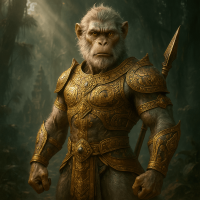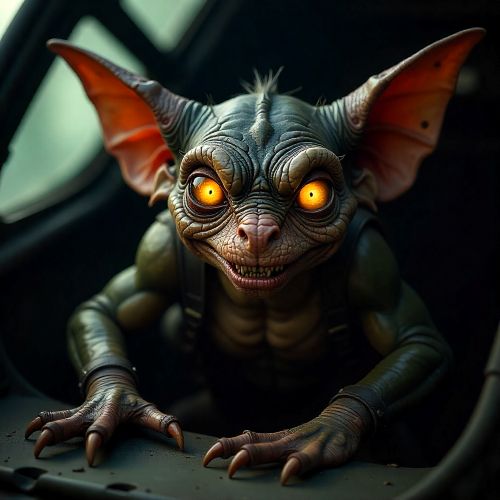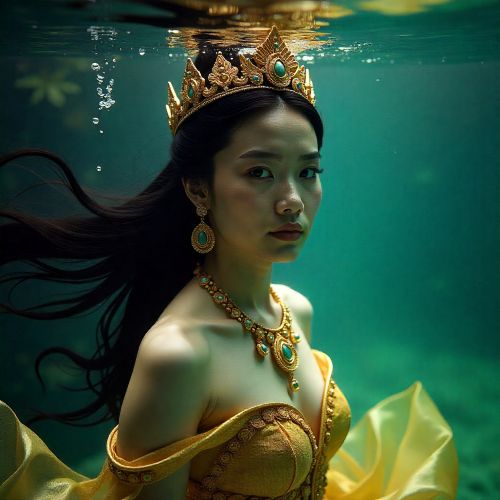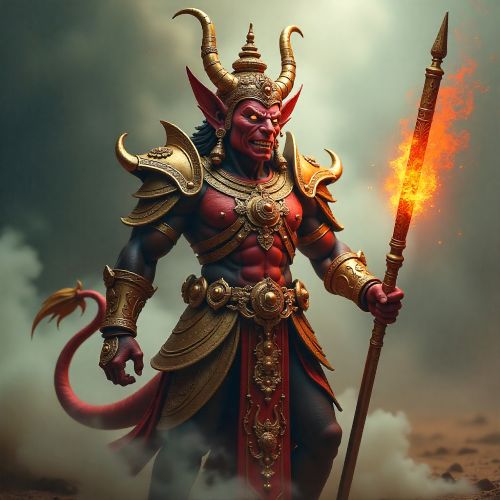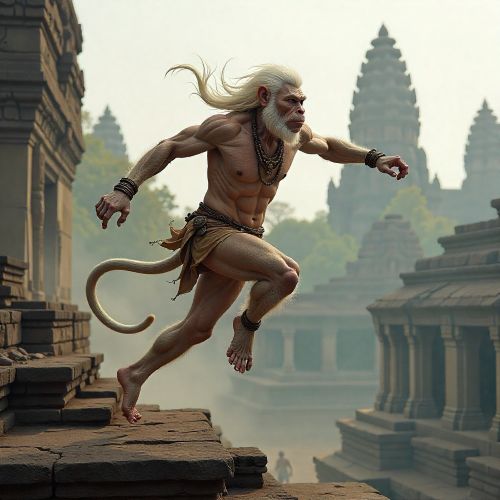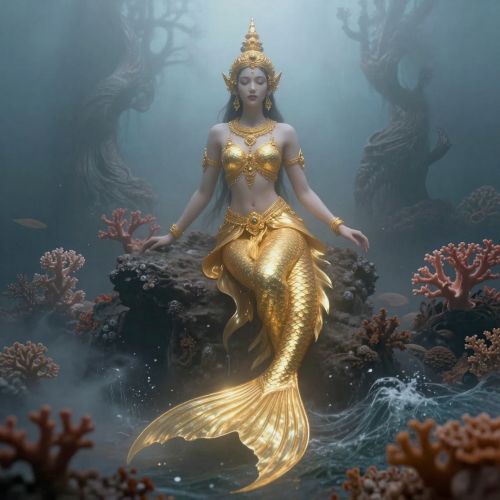Angkhut : The Monkey Warrior of the Reamker
Listen
At a glance
| Description | |
|---|---|
| Origin | Cambodian Mythology |
| Classification | Gods |
| Family Members | Vali (Father), Hanuman (Cousin), Sugriva (Uncle) |
| Region | Cambodia |
| Associated With | Warrior |
Angkhut
Introduction
Angkhut occupies a noteworthy place in the Reamker, Cambodia’s revered adaptation of the Indian Ramayana. While he does not dominate the narrative like Hanuman or Preah Ream, his presence enriches the complex world of the monkey warriors who fight to uphold cosmic order. The Reamker integrates Hindu mythic structure with Khmer cultural values and Buddhist ethics, giving characters like Angkhut a distinctly Cambodian identity. In this epic, he is portrayed as the cousin of Hanuman and the son of the mighty Vali, linking him to a heroic lineage that strives to support Preah Ream in his mission to defeat Krong Reap and rescue Neang Seda. His contribution, though subtle, reflects the collaborative spirit and kinship-driven loyalty central to Khmer mythology.
Physical Traits
Although surviving manuscripts and temple carvings offer no formal description of Angkhut’s appearance, his portrayal typically aligns with the visual conventions of Khmer monkey warriors. In traditional dance, Vanara characters embody a blend of human and simian qualities, signifying their supernatural origins and heroic nature. Angkhut is therefore understood to possess the strength, agility, and disciplined grace characteristic of his lineage. His presence on stage or in mural depictions is often stylized to reflect the elegance and dynamism associated with Khmer classical artistry.
Family
Angkhut’s identity is deeply shaped by the lineage from which he descends. As the son of Vali, the legendary monkey king known for his unmatched strength, he inherits the prestige and duty associated with the ruling Vanara clan. This connection situates him within one of the epic’s most influential families, whose members play key roles in both Indian and Khmer traditions. His relationship with Hanuman, his cousin, further reinforces his relevance, as Hanuman stands at the forefront of the struggle to restore righteousness and rescue Neang Seda. Additionally, Angkhut’s position as the nephew of Sugriva, who allies with Preah Ream after Vali’s death, places him at the heart of the political and familial alliances that propel the narrative forward.
Other names
Angkhut is consistently identified by this name in Khmer sources, and no alternative names or epithets have been documented in academic literature or oral performance traditions. His identity remains stable across retellings, defined more by his genealogy and role than by multiple titles or regional variations. This clarity of naming underscores his place within the tightly-knit Vanara family structure preserved in the Reamker tradition.
Powers and Abilities
The Reamker does not outline specific supernatural abilities for Angkhut, but his inclusion in the Vanara ranks suggests that he shares the combat skills, swiftness, and heightened perception common among monkey warriors. While characters like Hanuman receive divine powers and extensive narrative focus, Angkhut’s abilities are portrayed through his dependable service during battles and missions. His strength, courage, and loyalty align him with the moral expectations placed on heroic figures in Cambodian mythology, where devotion to one’s kin and leader often eclipses the need for individual displays of power.
Modern Day Influence
Angkhut’s modern visibility is modest compared to more prominent figures like the Cambodian Hanuman, yet he remains part of the Reamker’s vast character tapestry celebrated in Cambodian performing arts. In Lakhon Khol (masked dance-drama), Sbek Thom (large shadow puppetry), and classical ballet performances, he may appear among the ensemble of monkey warriors who accompany Hanuman or Sugriva. Scholars preserving the genealogical structure of the Reamker continue to include Angkhut in academic charts and performance manuals, ensuring that he remains a recognized figure in the heritage of Khmer mythology. Though he seldom appears in contemporary media adaptations, his character endures as an essential thread within the mythic narrative that continues to shape Cambodia’s cultural imagination.
Related Images
Source
Camboticket. (n.d.). Cambodia’s amazing mythical creatures and where to find them. Retrieved November 20, 2025, from https://camboticket.com/blog/cambodias-amazing-mythical-creatures-and-where-to-find-them/
Wikipedia contributors. (n.d.). Category: Cambodian folklore. Wikipedia. Retrieved November 20, 2025, from https://en.wikipedia.org/wiki/Category:Cambodian_folklore
APIFantasy. (n.d.). Cambodian/Khmer mythology – Gods, Goddesses, and Guardians. Wattpad. Retrieved November 20, 2025, from https://www.wattpad.com/1396585394-apifantasy-myth-and-folklore-anthology-cambodian
Bizot, F. (2004). The Gate. Vintage.
Thompson, A. (2003). Angkor: Celestial Temples of the Khmer Empire. River Books.
Harris, I. (2005). Cambodian Buddhism: History and Practice. University of Hawaii Press.
Ledgerwood, J. (1998). Rural Buddhism and ethnic identity in Cambodia. Asian Ethnicity, 1(1), 27–44.
Chandler, D. (2008). A history of Cambodia (4th ed.). Westview Press.
Frequently Asked Questions
Who is Angkhut in Cambodian mythology?
Angkhut is a Vanara warrior in the Reamker, the Cambodian Ramayana, known as the son of Vali and cousin of Hanuman. He supports Preah Ream in the war against Krong Reap.
What role does Angkhut play in the Reamker?
He assists the monkey army in battles on Lanka, representing loyalty and kinship. His role reinforces the collaborative struggle central to Khmer storytelling.
Is Angkhut mentioned in Indian versions of the Ramayana?
Angkhut’s presence is specific to Southeast Asian adaptations such as the Reamker. He does not appear as a major character in Sanskrit sources.
How is Angkhut represented in Cambodian art and performance?
He appears in ensemble scenes in Lakhon Khol and shadow puppetry. His figure maintains the stylized elegance of traditional Vanara portrayals.
Does Angkhut have any supernatural abilities?
While not given explicit divine powers, he is depicted with the strength, agility, and discipline typical of monkey warriors. His significance lies in loyalty rather than individual feats.


